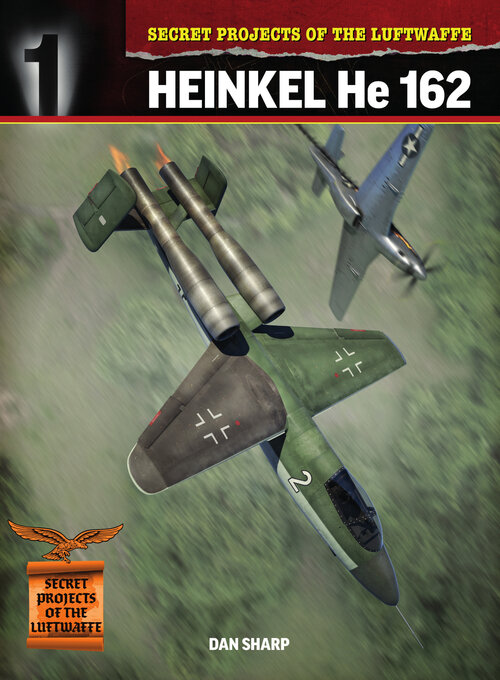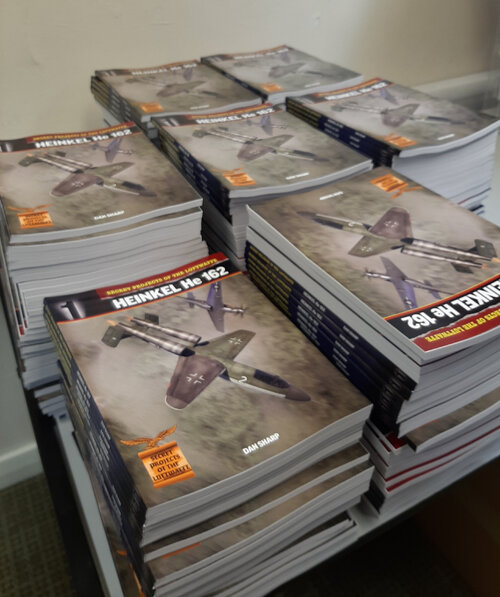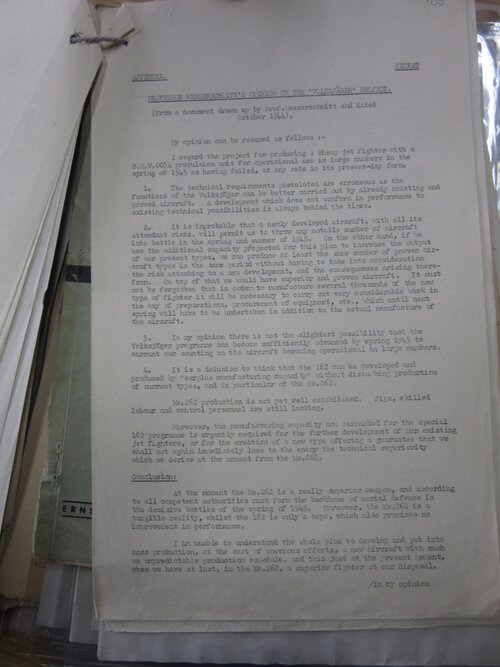- Joined
- 11 June 2014
- Messages
- 1,531
- Reaction score
- 2,838
Just sent this book to press today. Physical copies should be available from Monday, November 16.
Secret Projects of the Luftwaffe: Heinkel He 162
by Dan Sharp
It's 172 pages with around 130 images - including many previously unseen drawings plus profile artworks by secretprojects.co.uk forum member Zizi6785 - for £12.99.
Heinkel’s single-jet He 162 fighter arrived in Luftwaffe service at the very end of the Second World War - but its development can be traced back to the beginning of July 1944. A contest had been set in motion to design a powerful and aerodynamically advanced replacement for Messerschmitt’s twin-jet Me 262 and Heinkel believed it could win.
As the competition progressed and Germany’s resources dwindled, it became clear that an advanced jet fighter was not what the Luftwaffe needed. A new concept was formulated: a cheap, basic fighter equipped with a single readily-available turbojet. The advanced fighter contest was temporarily shelved and Volksjäger was born.
Swept metal wings, V-tail and HeS 011 engine swapped for straight wooden wings, conventional tail and BMW 003 engine, Heinkel’s fighter design was rushed through a brief selection process before Adolf Hitler himself placed an order for 1,000 a month. A massive effort saw the He 162 go from blueprints to flying prototype in less than two months. But was it a triumph of engineering prowess or a costly white elephant which hastened the end of the war? Using contemporary documents, author Dan Sharp explains and explores the development history of this fascinating and controversial late-war ‘secret project’.
In short, this is not a complete history of the everything to do with the He 162. It only barely touches on the production side and efforts to get the type into Luftwaffe service. Rather, it looks in great detail at the design and development of the He 162 as a 'secret project' and uses primary sources to find answers for questions such as what exactly caused the He 162 V1 to crash; which prototypes had the lengthened fuselage and exactly how long was the extension; was there ever an He 162 B, C, D or E and if so what were they; is 'Salamander' a legitimate name for the type; when exactly did Alexander Lippisch become involved with the project and what did his contribution consist of; was Goering 'tricked' into approving the He 162 development using faked cinema footage of one flying; how do the famous 'Russian' drawings of the P 1073 match up against contemporary German ones; exactly whose idea was it to make the He 162 a Hitler Youth project and how was that supposed to work; what was the difference between the BMW 003 A-1, E-1 and E-2 and was the E-2 ever installed in an He 162; what exactly was the cause of the He 162's infamous lateral instability; which trainer variants of the He 162 were built, what were they called, and what future developments of the type were actually approved for series production and more.
You may think you know the answers to all those questions - I thought I did - but what the primary sources (all listed, along with their locations should you wish to track them down and examine them yourself) have to say may surprise you.

Secret Projects of the Luftwaffe: Heinkel He 162
by Dan Sharp
It's 172 pages with around 130 images - including many previously unseen drawings plus profile artworks by secretprojects.co.uk forum member Zizi6785 - for £12.99.
Heinkel’s single-jet He 162 fighter arrived in Luftwaffe service at the very end of the Second World War - but its development can be traced back to the beginning of July 1944. A contest had been set in motion to design a powerful and aerodynamically advanced replacement for Messerschmitt’s twin-jet Me 262 and Heinkel believed it could win.
As the competition progressed and Germany’s resources dwindled, it became clear that an advanced jet fighter was not what the Luftwaffe needed. A new concept was formulated: a cheap, basic fighter equipped with a single readily-available turbojet. The advanced fighter contest was temporarily shelved and Volksjäger was born.
Swept metal wings, V-tail and HeS 011 engine swapped for straight wooden wings, conventional tail and BMW 003 engine, Heinkel’s fighter design was rushed through a brief selection process before Adolf Hitler himself placed an order for 1,000 a month. A massive effort saw the He 162 go from blueprints to flying prototype in less than two months. But was it a triumph of engineering prowess or a costly white elephant which hastened the end of the war? Using contemporary documents, author Dan Sharp explains and explores the development history of this fascinating and controversial late-war ‘secret project’.
In short, this is not a complete history of the everything to do with the He 162. It only barely touches on the production side and efforts to get the type into Luftwaffe service. Rather, it looks in great detail at the design and development of the He 162 as a 'secret project' and uses primary sources to find answers for questions such as what exactly caused the He 162 V1 to crash; which prototypes had the lengthened fuselage and exactly how long was the extension; was there ever an He 162 B, C, D or E and if so what were they; is 'Salamander' a legitimate name for the type; when exactly did Alexander Lippisch become involved with the project and what did his contribution consist of; was Goering 'tricked' into approving the He 162 development using faked cinema footage of one flying; how do the famous 'Russian' drawings of the P 1073 match up against contemporary German ones; exactly whose idea was it to make the He 162 a Hitler Youth project and how was that supposed to work; what was the difference between the BMW 003 A-1, E-1 and E-2 and was the E-2 ever installed in an He 162; what exactly was the cause of the He 162's infamous lateral instability; which trainer variants of the He 162 were built, what were they called, and what future developments of the type were actually approved for series production and more.
You may think you know the answers to all those questions - I thought I did - but what the primary sources (all listed, along with their locations should you wish to track them down and examine them yourself) have to say may surprise you.




